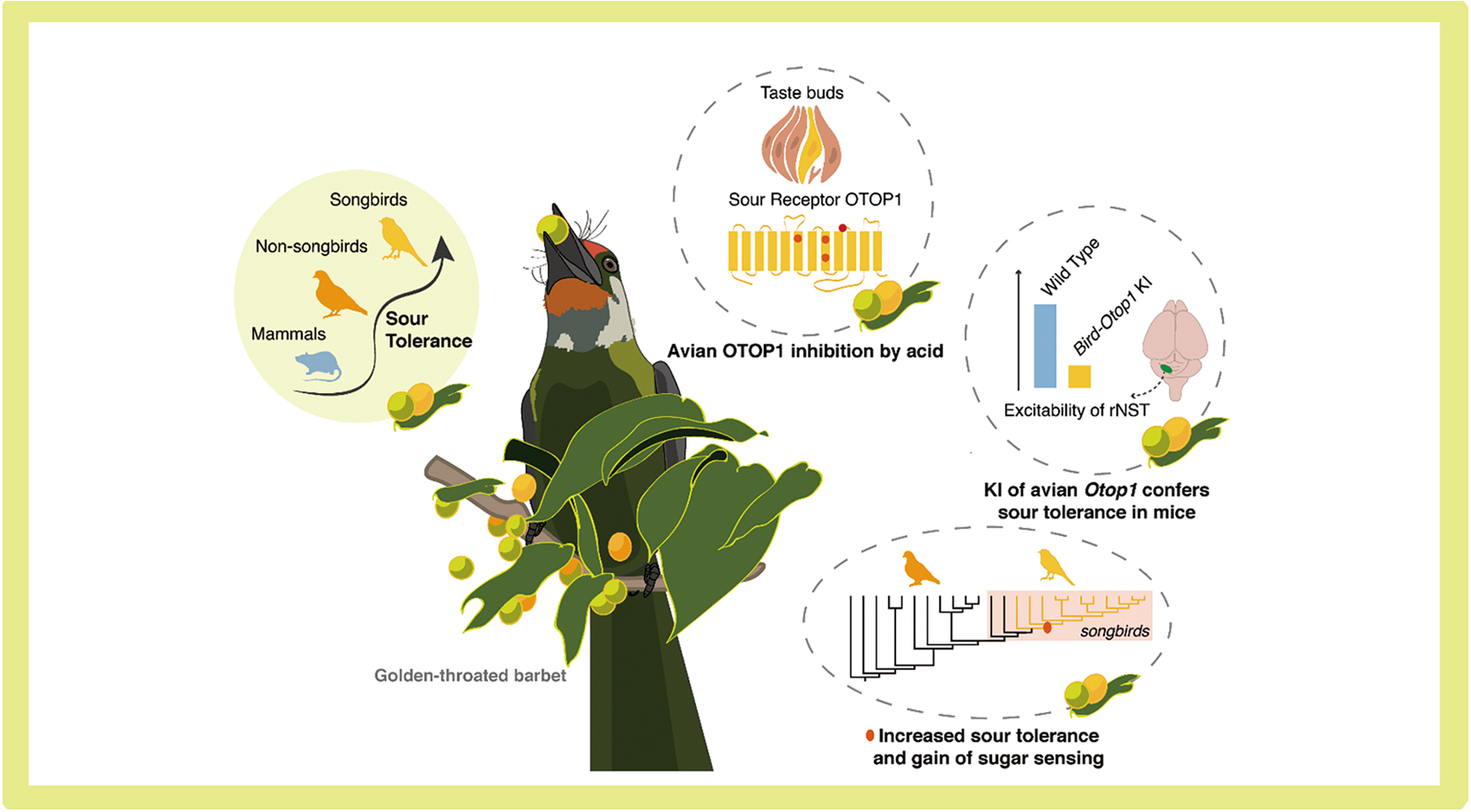While most mammals find highly acidic foods aversive, many bird species have evolved remarkable tolerance for sour fruits—a crucial adaptation that has opened new ecological niches. Wild fruits can contain organic acid concentrations dozens of times higher than cultivated varieties, yet species like the redwing (Turdus iliacus) and black grouse (Tetrao tetrix) have evolved to actually prefer these acidic foods as dietary staples.
A new study in Science on June 19 by researchers from the Kunming Institute of Zoology of the Chinese Academy of Sciences has uncovered the molecular mechanism behind this evolutionary advantage. Birds’ sour taste receptor OTOP1 operates through a unique inhibitory system—under highly acidic conditions, it dampens the neural signals that would normally trigger aversion. When they transferred songbird OTOP1 genes to mice, sour-related neural activity dropped sharply. Conversely, artificially activating OTOP1 in birds impaired their natural sour tolerance, confirming the receptor’s crucial role.
Songbirds possess an additional genetic mutation (G378) that confers even stronger acid resistance. This enhancement appears to have co-evolved with sweet perception, creating a sensory toolkit that allows birds to exploit a broader range of fruit resources. The timing of this evolutionary development—coinciding with the gain of sweet sensing in songbirds—helps explain the remarkable adaptive radiation of these species.

How birds evolved sour tolerance to thrive on acidic fruits. This adaptation likely underpins the golden-throated barbet’s success in montane forests where acidic fruits dominate seasonal diets. (Graphic: ZHANG Hao)

